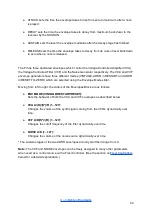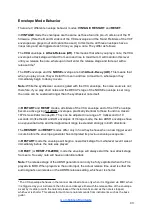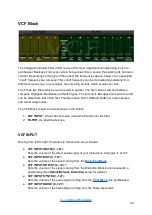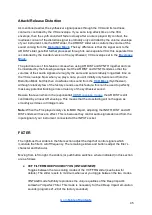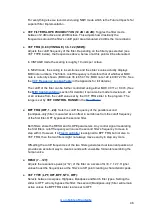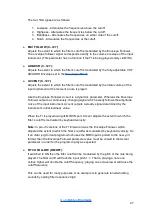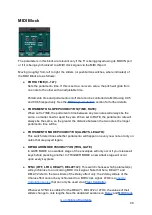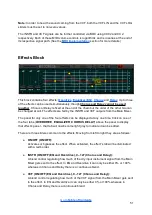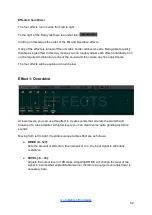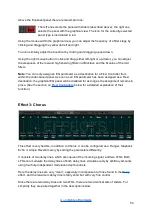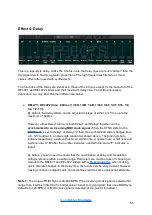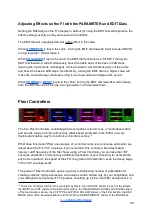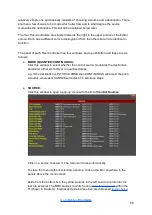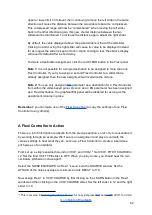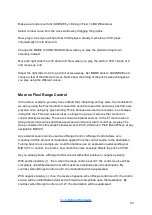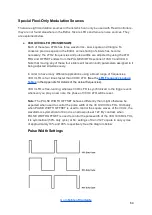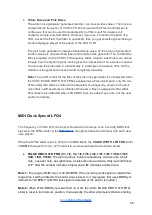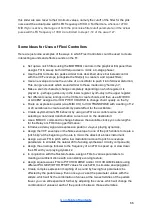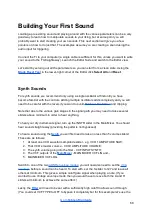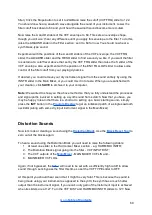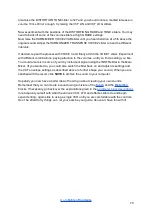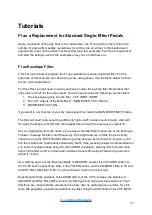
Effect 4: Delay
This is a tape-style delay. Unlike the Chorus, here the delay lines are much “darker” than the
dry signal due to having a greater proportion of the high frequencies filtered out. It is a
classic effect often used with synthesizers..
The functions of the Delay are identical to those of the Chorus except for the behavior of the
DELAY1 and DELAY2 sliders and their maximum delay time. To avoid unnecessary
duplication, we only describe their differences below.
●
DELAY1, DELAY2 (0ms...600ms | 1/16D, 1/8D, 1/4D, 1/16T, 1/8T, 1/4T, 1/16, 1/8,
1/4, 1/2, 1/1):
By default, the delay sliders can be adjusted in steps of either 4 or 5 ms up to the
maximum of 600ms.
However, either Delay1 alone, or both Delay1 and Delay2 together can be
synchronized to an incoming MIDI clock signal
. When the SYNC slider in the
is set to
Delay1
or
2
then the synchronized slider changes from
a 0...127 readout to a note-length readout as shown above. The plain numbers
indicate respectively a sixteenth note, an eighth note, a quarter note, a half note and
a whole note. A “
D
” after the number indicates a dotted note and a “
T
” indicates a
triplet.
As before, you will need to ensure that the combination of delay and modulation
settings remains within a usable range. Particular care must be taken if choosing to
modulate the DELAY1 and DELAY2 sliders with a
; when making
quick, discrete changes to the delay time, the results can be very musical; however,
making continuous adjustments can sometimes lead to some unpleasant artefacts.
Note 1:
The range of MIDI Sync is 30-480 BPM. If the incoming clock signal is outside that
range then it will be limited to the border value closest to it. (A program that uses MIDI Sync
defaults to 120 BPM if no MIDI clock signal is detected at the point it is loaded.)
56

